Do you know what disease is in no way inferior in no way, but maybe even surpasses diseases of the cardiovascular system? This is Hollytiasis, or gallstone disease: about 600,000 Russians get to remove stones from the gallbladder under the surgeon knife. This procedure in frequency is superior only to appendicitis operations. We will talk about the reasons, signs and correction of the “popular” ailment in the article.
Content
- Symptoms of stones in the gall bladder
- Stones in the gall bladder. The reasons for the development of gallstone disease
- Gall bladder stones: composition, shape and quantity
- Stones in the gall bladder. Complications of gallstone disease
- How to treat stones in the gall bladder: diagnostic methods
- How to remove stones from the gallbladder
- Diet for stones in the gall bladder
- Prevention of the development of housing and communal services
- When the gall bladder “asks” for help: an alarming symptoms. Video
By gallstone disease means the formation and accumulation of stones in the cavities and ducts of the gall bladder, which occurs due to a metabolic disorder in the body.
The epicenter of the problem becomes the gall bladder. It is adjacent to the liver and is a kind of reservoir where liquid bile accumulates, which synthesizes the liver. The material for the formation of calculi, which is also called bile stones, are cholesterol crystals and occasionally calcium salts of pigmented-core nature. This is a very long process - it can take from 4 to 20 years.
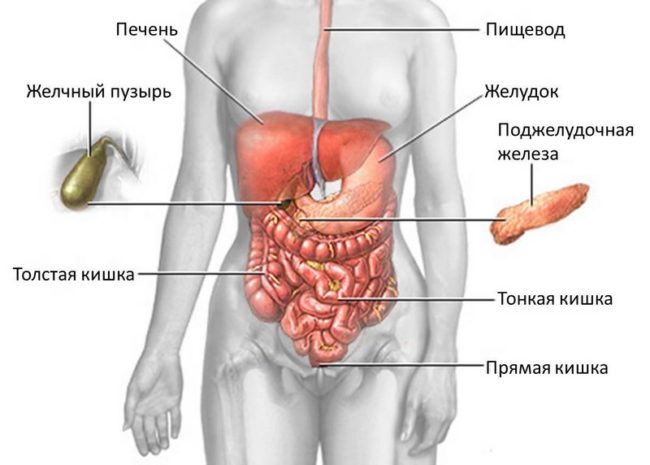
The gall bladder is not the only place where the stones are found, they can also accumulate in the liver and the barrel of the liver duct. In structure, size and form, calculi are very diverse. When one or more stones block a duct along which bile passes from the gallbladder into the cavity of the small intestine, a person is tormented by colic. ZhKB often causes the development of inflammation in the gall bladder (cholecystitis), since the stones injure its mucous membrane.
Pathology is striking in the population of large industrial cities. It is believed that it is there that people abuse too heavy food for the digestive system. As a rule, women are affected by 3-8 times more often than representatives of the stronger sex.
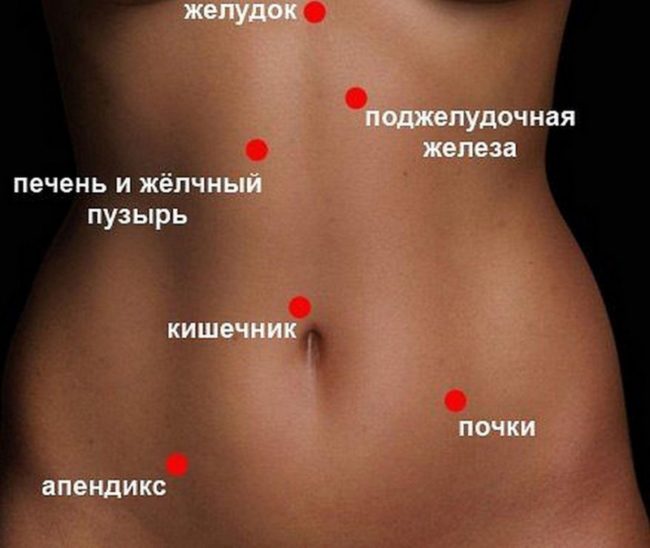
Symptoms of stones in the gall bladder
When stones appear in the gall bladder, the disease does not make itself felt on average for 6 to 10 years, that is, it is in latent form. As soon as characteristic features will appear, depending on the number, parameters and location of the calculi.
The main signs of gallstone disease are as follows:
- Pain in the liver and under the ribs on the right side. The nature of the pain is paroxysmal, drilling, stitching.
- Nausea, which in some cases leads to vomiting.
- Bodding air.
- A bitter taste in the tongue, which is a consequence of the flow of bile in the stomach.
- Increased gas formation, dyspepsia, colorless feces.
- Fast fatigue and general malaise.
- Increased body temperature.
- Jaundice.
An attack of bile colic can cause the use of alcoholic beverages, food, heavy for digestion, fried dishes, abuse of sharp seasonings, a lot of physical activity and severe stress. First, the pain appears on the right side, in the area under the ribs, and gradually begins to radiate to other parts of the body. The object of pain can be the right blade, lower back, right half of the neck. Sometimes an attack of bile colic is taken as angina pectoris, since the pain gives to the sternum. In fact, the epicenter of pain becomes the gall bladder and its ducts, constrained by spasms. This happens when the concretions caused severe irritation of the mucous membranes of the bubble.
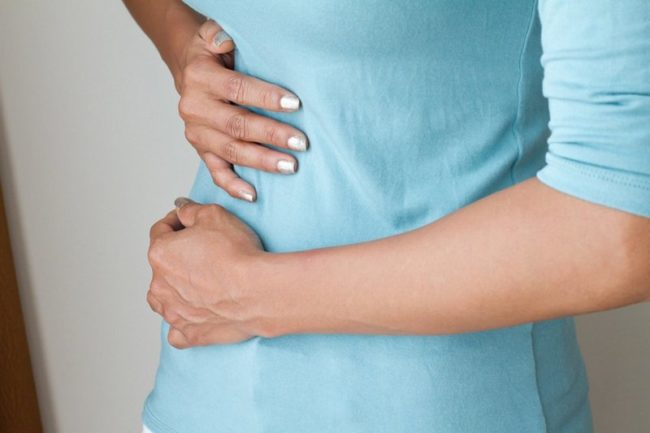
A person is forced to experience even more painful sensations when stones, moving along the gallway, overlap the lumen of the bile duct. If the blockage is complete, soon the liver will increase in size, and its capsule will stretch. This violation will cause constant stupid pains and a sense of heaviness under the ribs on the right. Outwardly, such changes are manifested by clinical symptoms of obstructive jaundice (yellowed skin and eye sclera) and bleaching of feces.
It happens that biliary colic passes on its own. Usually this happens immediately, as soon as the stone enters the bile duct into the cavity of the small intestine. The duration of the attack, as a rule, does not exceed 6 hours. To alleviate the suffering of the patient, he can apply a heating pad on the site of the right hypochondrium. If the stone is too large for the bile duct, it will make the outflow of bile impossible. The pains will only intensify - this indicates the need for immediate medical care.
Very often, gallstones with an admixture of bile indicate the gallstone disease, and vomiting does not at all bring relief, since it is just a reaction to the irritation of the mucous membrane of the 12-perimal intestine.
Stones in the gall bladder. The reasons for the development of gallstone disease
Healthy bile is a liquid, without any impurities, a substance from which calculi cannot form. Pathological formations appear against the background of the following factors:
- high concentration of cholesterol in the composition of bile;
- stagnation of bile as a result of violation of its outflow;
- the infectious and inflammatory process in the gall bladder, which is a prerequisite for the development of cholecystitis.
The formation of bile stones is based on a pathological change in bile with a violation of the equilibrium between cholesterol and acidic substances in its composition.
Excess cholesterol in bile is observed for the following reasons:
- Abuse of food with a high content of animal fats.
- Reducing the synthesis of bile acid in the liver.
- Obesity.
- Long -term reception of oral contraceptives, which include estrogen (for women).
- The presence in the history of other serious diseases such as diabetes, cirrhosis, Crohn's disease, allergies.
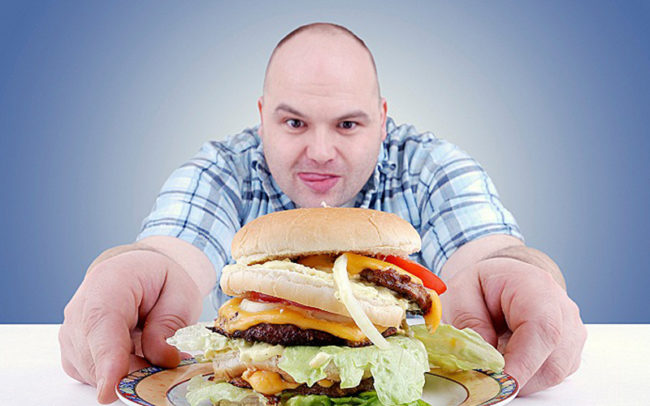
All these factors do not affect the gall bladder in the best way, inhibiting its contractile function. On this basis, the so -called cholesterol flakes begin to settle inside the organ, from which calculi are later formed.
Violation of the outflow of bile and its stagnation are due to the following reasons:
- Gallopolation Discinesia (disorder of contractile activity).
- Flatulence (high pressure occurs in the gastrointestinal tract, which prevents the normal outflow of bile).
- Operations on the gastrointestinal tract (for example, vagotomy).
- A lifestyle, devoid of sports and active pastime.
- Pregnancy (the fetus in the uterus squeezes the organs of the peritoneum and disrupts the outflow of bile).
- An unbalanced diet with large intervals between basic meals.
- A complete refusal of food.
- A sharp loss of 5 or more kilograms as a result of a hard diet.
The following factors include mechanical reasons for stagnation:
- The formation of adhesions, tumors in the gall bladder.
- Edema of the walls of the gall bladder.
- Bending or narrowing of the bile ducts.
- Congenital developmental abnormalities: cysts of the main duct, protrusion of the walls of the 12-paste intestine.
A significant impact on the problems with the outflow of bile has an infection and inflammation of the gallbladder. This often leads to the development of cholecystitis and cholangitis, which are based on acute and chronic inflammatory reactions in the gallbladder and its ducts.
Gall bladder stones: composition, shape and quantity
When the natural movement of bile stops in the gallbladder, cholesterol plaques settle on the mucous membranes of the organ and form “sand”, which later becomes material for the formation of bile stones. Due to the variety of calculi, they were classified into groups.
In structure, the gallstones are:
- homogeneous - are formed when pure cholesterol, mucus clots and extraneous objects (for example, fruit bones) “glue together”;
- complex - have a core, body and bark. The core is formed from the substance bilirubin.
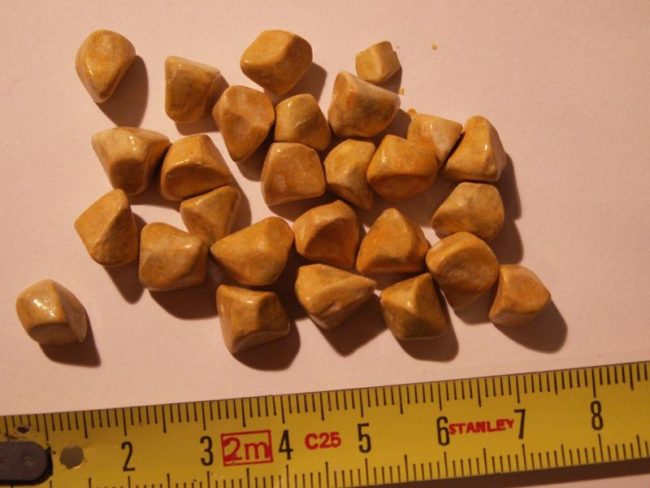
In the chemical composition, the gallstones are divided into the following types:
- cholesterol;
- lime;
- pigmentation;
- mixed type.
Note that calculi with a homogeneous chemical composition are extremely rare. Basically, there are several components in the stone and the largest share belongs to cholesterol.
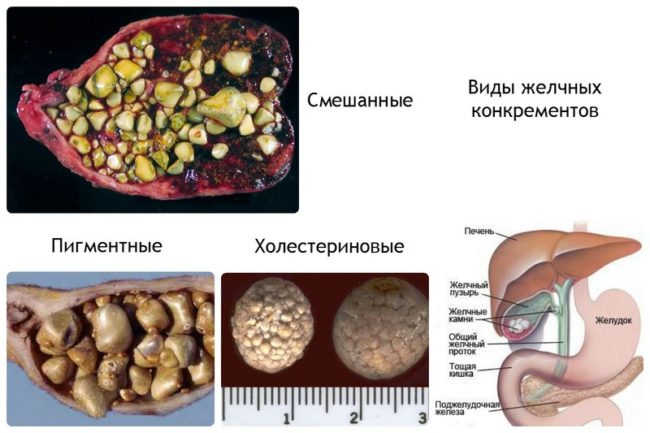
Depending on the structure, the gallstones are:
- crystalline;
- layered.
The bile stones are distinguished by consistency:
- solid;
- waxy.

In size, the calculi can be completely different - their parameters vary from several millimeters to several centimeters. Often, the gallstone in size resembles a hazelnut or chicken egg. It happens that the entire cavity of the gallbladder is occupied by one large stone weighing up to 80 g. The form of calculi can also be completely different. Small stones, the diameter of which does not exceed 1 - 2 mm, can pass along the bile duct, which can not be said about larger calculi. When a large stone blocks the duct, appropriate symptoms and complications that were described above appear. The number of stones concentrated in one gall bladder, in each case, is different. In medical practice, there is a case when approximately 7,000 calculi were in one gallbladder.
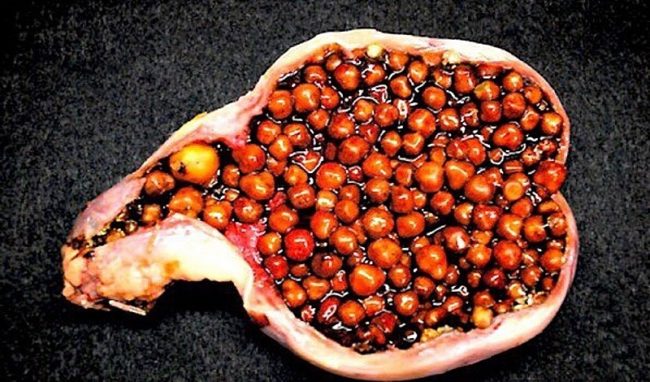
Stones in the gall bladder. Complications of gallstone disease
If you do not take measures to treat stones in the gall bladder, the condition of a sick person may aggravate due to the following complications:
- Cholecystitis in acute form.
- Clogging of the biliary duct, which is the basis for the development of infection, chronic cholecystitis and pancreatitis.
- Rupture of the gall bladder and, as a result, peritonitis.
- The penetration of large bile stones into the intestines with its subsequent blockage.
- An increase in the risk of developing cancer disease.
How to treat stones in the gall bladder: diagnostic methods
Ultrasound examination helps to detect the calculi in the gallbladder, and large stones can even be felt with your fingers. Typically, the doctor receives all the information that interests him about the number, sizes and places of stones accumulation. At the same time, you can evaluate the real state of the gallbladder, find out if there is inflammation there or not.
When ultrasound is not enough to confidently make a diagnosis, doctors resort to other, more complex, diagnostic methods, the main ones are the following: the following:
- oral cholecystography - the method consists in an X -ray examination, for which the patient takes a special drug contrasting bile;
- retrograde cholangiopancreatography is an X -ray examination, which involves endoscopy and the introduction of a contrasting substance into the ducts of the gallbladder.
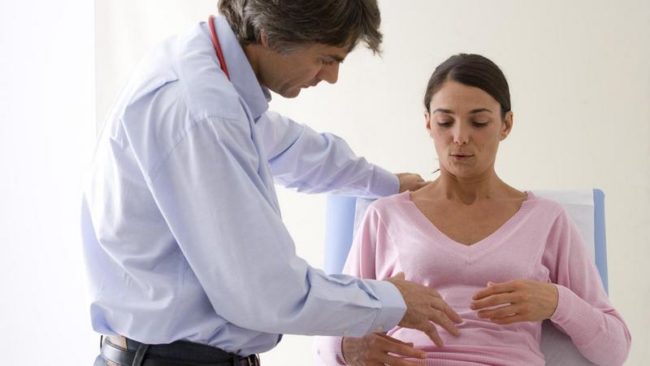
How to remove stones from the gallbladder
The latest achievements of conservative medicine allow you to save the patient from the calculi and preserve the organ along with the ducts. Today, doctors practice three main methods of treating housing and communal services. Consider each of them in more detail.
Stones in the gall bladder. Oral litholytic therapy
This is nothing more than the dissolution of the calculi with a drug. For this, the patient is prescribed drugs by Ursosan and the Henofalk. To understand how these products help to dissolve stones in the gallbladder, you need to look into their composition. The active components of Ursosan and the Khenofalka - ursodexicoic and chenodexicoic acid, respectively, have the ability to reduce the concentration of cholesterol in bile and at the same time contribute to an increase in the level of bile acids. The latter are active in relation to the calculi, and the gallstones gradually begin to decrease in size.

The prerequisite for the implementation of the litholithic method of treatment are the following factors:
- The patient is predominant with cholesterol cocked.
- The stones are small (up to 15 mm in diameter) and fill only about half of the gall bladder.
- The gall bladder is able to fully contract, and its ducts have normal cross -country ability.
The obstacle to litholithic therapy is almost all diseases of the gastrointestinal tract and kidneys. The duration of the course of treatment varies from six months to 2 years. All this time, the patient regularly passes an ultrasound. The effectiveness of the method ranges from 40 to 80% - the success of treatment depends on the size of the calculi and the dose of the drug. After therapy, the need to take Ursosan and the Khenofalk in supporting doses, otherwise the concentration of cholesterol in the blood will increase again.
Stones in the gall bladder. Ultrasound extorporepical lithotripsy
The method is based on crushing stones in the gallbladder. Solid clots are crushed under the onslaught of a shock wave up to 3 mm in diameter and fall into the 12-first intestine along the bile ducts. Extracorporeal lithotripsy is often complemented by oral litholytic therapy, when small fragments are dissolved with special drugs.
This method of treatment is practiced among patients who have a small number of stones (up to 4 pieces). The effectiveness of therapy increases if the calculi consist mainly of cholesterol and have a large size. As a rule, the duration of treatment is 1 - 7 procedures. Extracurorli lithotripsy is contraindicated for people with poor blood coagulation and sluggish inflammatory pathologies of the gastrointestinal tract.
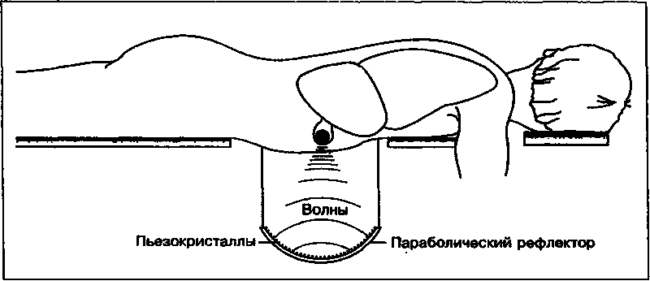
For all the effectiveness of the method, he noted the following side effects:
- the probability of blockage of the bile ducts;
- the wound of the mucous membrane of the gall bladder by uneven edges of the calculi under the influence of vibration.
These undesirable phenomena can cause inflammation and the beginning of the adhesive process in the gall bladder.
Stones in the gall bladder. Bearing Holelithlysis
This invasive method of correction of housing and communal services is used when without operation the stones of the gallbladder cannot be eliminated. Correxic Holelitholysis is a powerful and very effective method of struggle not only with cholesterol stones, but also of calculi of a different origin. The operation can be carried out at any stage of the development of the disease with any degree of severity of its clinical picture. The indications for the holding of golitolysis are often repeated painful attacks due to the large size of the gallstones.
During the procedure, a catheter is inserted through the skin and liver tissue and liver into the cavity of the affected organ, and then 5 - 10 ml of methyltretubutyl ether is served in drops - a substance that breaks down anomalous formations. For about 1 month of the patient, the patient can be rid of 90% of the calculi.
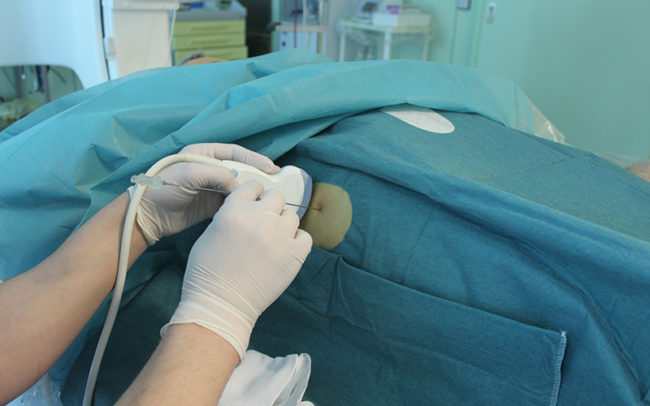
The methods described above show how to effectively remove stones from the gallbladder without serious surgery. There is another way of treating gallstone disease, which has become especially in demand lately.
Stones in the gall bladder. Cholecystectomy
For the treatment of housing and communal services complicated by cholecystitis, cholecystectomy is used - the removal of the gallbladder along with the calculi filling it. Since cholecystitis develops due to a violation of metabolism, which directly affects the combination of components in the composition of bile, the dissolution or grinding of stones will not relieve the patient from the problem-after some time the stones will appear again. The bubble is removed during the laparoscopic operation - it is removed through small cuts in the front wall of the abdominal cavity, using a video camera (laparascop) for this.
This method has several “advantages” compared to open surgical intervention:
- The patient is quickly recovering after the operation.
- In places of incisions on the stomach there are barely noticeable scars.
- The risk of developing postoperative hernia is extremely small.
- The cost of laparascopic cholecystectomy is relatively low.

Contraindications to the operational solution of the problem are:
- obesity 2 and 3 degrees;
- credients of very large size;
- operations on the gastrointestinal tract in the past;
- purulent damage to the gallbladder;
- pathologies of the cardiovascular and respiratory systems;
- 3 trimester of pregnancy.
Unfortunately, cholecystectomy will not save the patient from the manifestations of housing and communal services in the future. The formation of the calculi is based on the “unhealthy” chemical composition of the bile. This problem remains after removing the organ affected by the calculi.
After such surgery, many complain of pain in the right hypochondrium and liver, a feeling of bitterness in the tongue, a metal taste of food. In addition, problems may appear associated with the dysfunction of such organs such as the liver, pancreas, a 12-pimple intestine. After removing the tank for the accumulation of bile, it flows freely into the intestines, while maintaining defects in its chemical composition. On this basis, the risk of developing serious inflammatory reactions in the gastrointestinal tract increases.
Diet for stones in the gall bladder
The habits of a healthy diet are of great importance in gallstone disease: in many ways, the patient's condition is determined by the fact that he eats. It is recommended to eat often, eating 5-6 times a day. When the portion modest in size enters the stomach, the choleretic effect is enhanced, an active outflow of bile occurs, which prevents its stagnation. A large amount of food eaten at a time forces the muscles of the gallbladder to instinctively contract, and this entails an exacerbation of the disease.
Power supply for stones in the gallbladder should be balanced: daily the body needs to receive a sufficient amount of animal protein and moderate - animal fats, since they are absorbed very difficult. It is preferable to eat plants of plant nature in food. It is very useful to eat products that contain magnesium.
What is eaten with stones in the gall bladder
On a plate of a person suffering from gallstone disease, the following products should regularly appear:
- low -fat meat and fish;
- cereals (in priority buckwheat and oatmeal);
- cheese, cottage cheese, milk, the level of fat content of which does not exceed 5%;
- a variety of fruits and vegetables: pumpkin, carrots, cauliflower, zucchini, watermelon, prunes, apples;
- home compotes, fruit drinks, mineral water, quince and grenade juice.
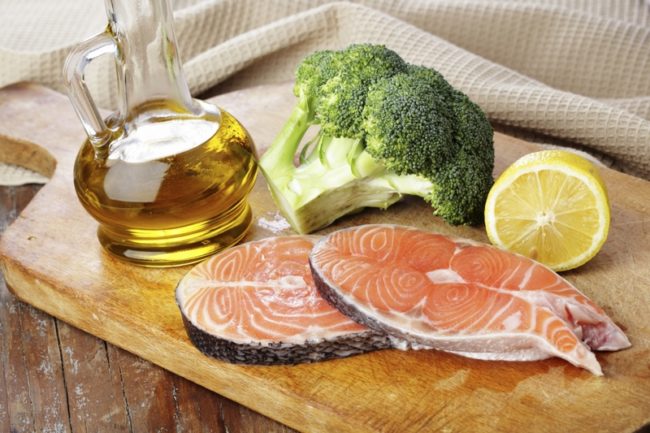
Which is impossible with stones in the gall bladder
In order not to provoke the development of bouts of gallstone disease, doctors strongly recommend that patients abandon some products. In the "black" list:
- fatty meat and fish, lard, offal;
- sausage, smoked meats, canned and salty food;
- butter (you can only add a little to porridge);
- fried dishes with pronounced sour or spicy taste;
- legumes, radish, cucumbers, onions, garlic, eggplant, radishes;
- fat broths;
- coffee, cocoa, alcoholic drinks.
Prevention of the development of housing and communal services
To insure yourself from the formation of bile calculi, you need to remember and try to comply with several rules:
- Do not eat a lot in one meal.
- Refuse products that differ in high fat and cholesterol.
- Get rid of excess weight by regular sports and a balanced diet.
- Remember the metabolism in the body: reduce cholesterol synthesis with the liver and activate the release of bile acids. For this, they usually take such drugs as Liobil and Ziksorin (only after a medical examination as prescribed by a doctor).









Comments
a couple of years ago, there was no side of metrogils from the same problem, there were no side effects ...
I’m not a fan of peeling at all, it saves from acne of metrogil, it also smoothes it ...
Great article! ...
I take the second course of the Capsules Climafite 911. The tides went very quickly. It became calmer, irritability went away and I sleep well ...
i also noticed - it is worth nervous, everything immediately affects the face. Therefore, I try to avoid conflicts and unpleasant people. Of the creams, I like Miaflow from wrinkles - smoothes not only small wrinkles ...